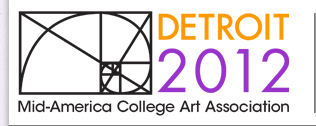Session Title
Rethinking Foundations: Ideals, Purposes, Needs
Start Date
4-10-2012 9:45 AM
End Date
4-10-2012 11:45 AM
Session Description
Debates about how best to train artists have circulated in the western world since the Renaissance. Certain holistic ideals, particularly those of the Beaux Arts and Bauhaus, had a particular impact on American studio-art programs. The post-Second World War modernization of American higher education, however, with accreditation schemes and standards for credit hours, research specialization, contact hours, semesters or quarters, etc., forced the compartmentalization of studio art into discrete areas. What were once coherent and unified visions of artistic knowledge were fragmented into smaller parts to accommodate the credit-hour and scheduling matrices of small, independent art schools and the art departments of large research universities alike.
This development is especially evident in the “Foundation” program. Conceived as a general substructure upon which more specialized training could be built, it was intended to serve all students regardless of their future directions. The foundation program evolved into a grab-bag of courses that inadvertently demarcated zones of knowledge. Dreams of a unity of artistic learning faded as artistic knowledge split into foundations and majors, and majors further splintered into various specializations that readily hardened into political territories that—in turn—become obstacles to foundations and the aims of education itself.
This session invites a rethinking of foundations programs, and their relationship to art programs and the academic structure at large. We are interested in papers or presentations that explore the underlying concept of foundations, critical or historical explorations, current trends, as well as case studies of program renovations and their successes and/or failures.
Rethinking Foundations: Ideals, Purposes, Needs
Debates about how best to train artists have circulated in the western world since the Renaissance. Certain holistic ideals, particularly those of the Beaux Arts and Bauhaus, had a particular impact on American studio-art programs. The post-Second World War modernization of American higher education, however, with accreditation schemes and standards for credit hours, research specialization, contact hours, semesters or quarters, etc., forced the compartmentalization of studio art into discrete areas. What were once coherent and unified visions of artistic knowledge were fragmented into smaller parts to accommodate the credit-hour and scheduling matrices of small, independent art schools and the art departments of large research universities alike.
This development is especially evident in the “Foundation” program. Conceived as a general substructure upon which more specialized training could be built, it was intended to serve all students regardless of their future directions. The foundation program evolved into a grab-bag of courses that inadvertently demarcated zones of knowledge. Dreams of a unity of artistic learning faded as artistic knowledge split into foundations and majors, and majors further splintered into various specializations that readily hardened into political territories that—in turn—become obstacles to foundations and the aims of education itself.
This session invites a rethinking of foundations programs, and their relationship to art programs and the academic structure at large. We are interested in papers or presentations that explore the underlying concept of foundations, critical or historical explorations, current trends, as well as case studies of program renovations and their successes and/or failures.


Related Paper(s)
Barr, Peter J. & Reising, Christine. How to produce articulate artists (http://digitalcommons.wayne.edu/macaa2012scholarship/3/).